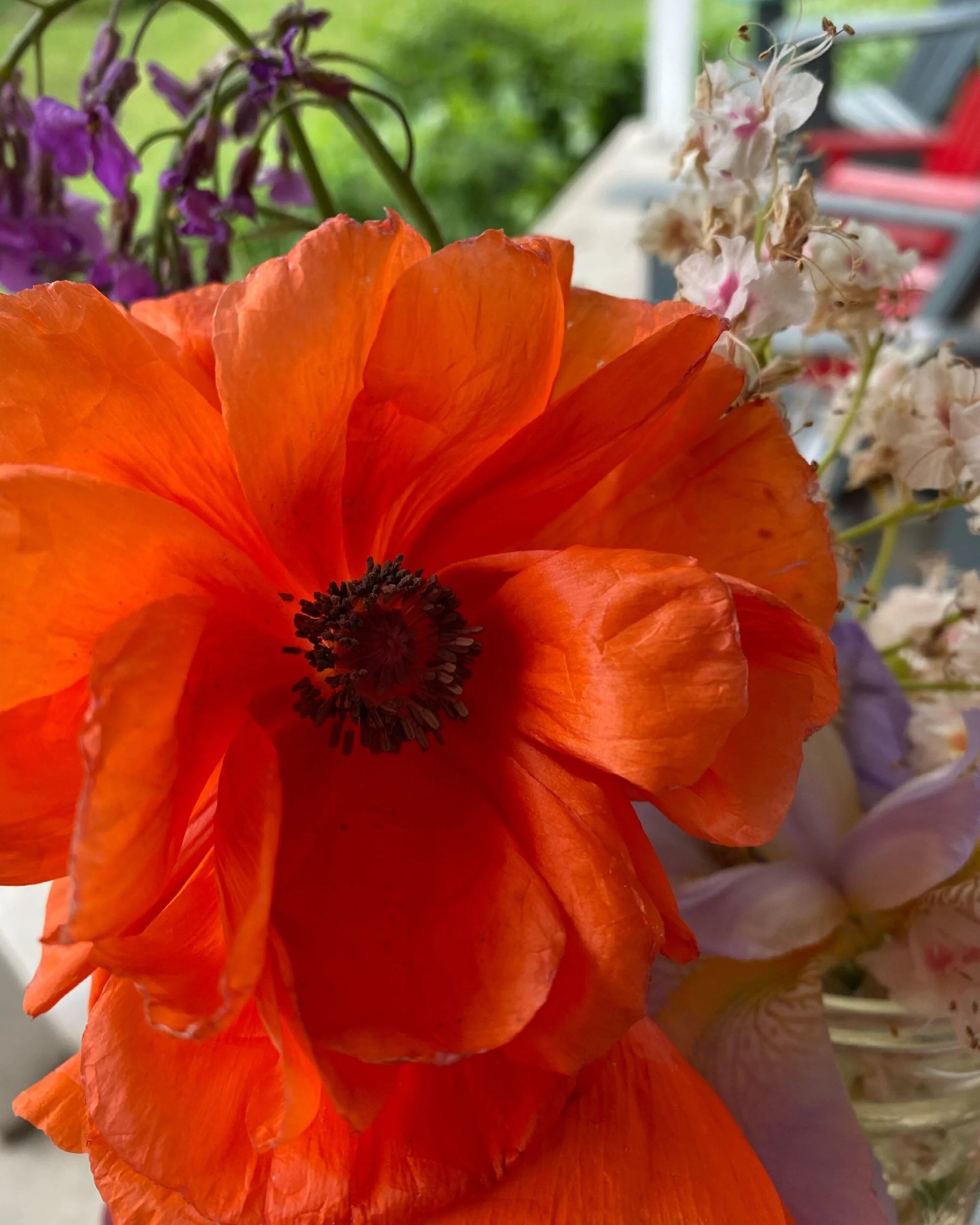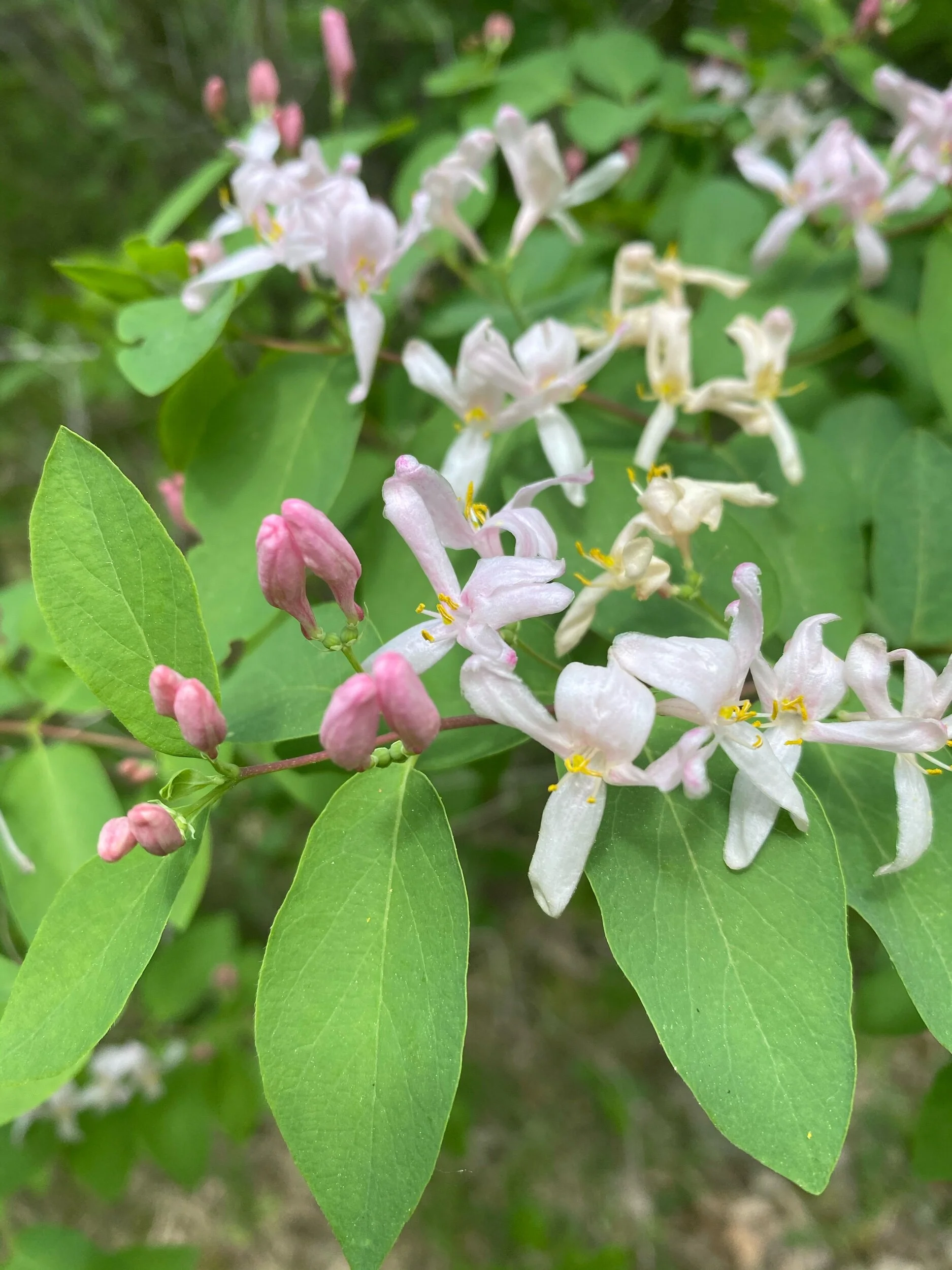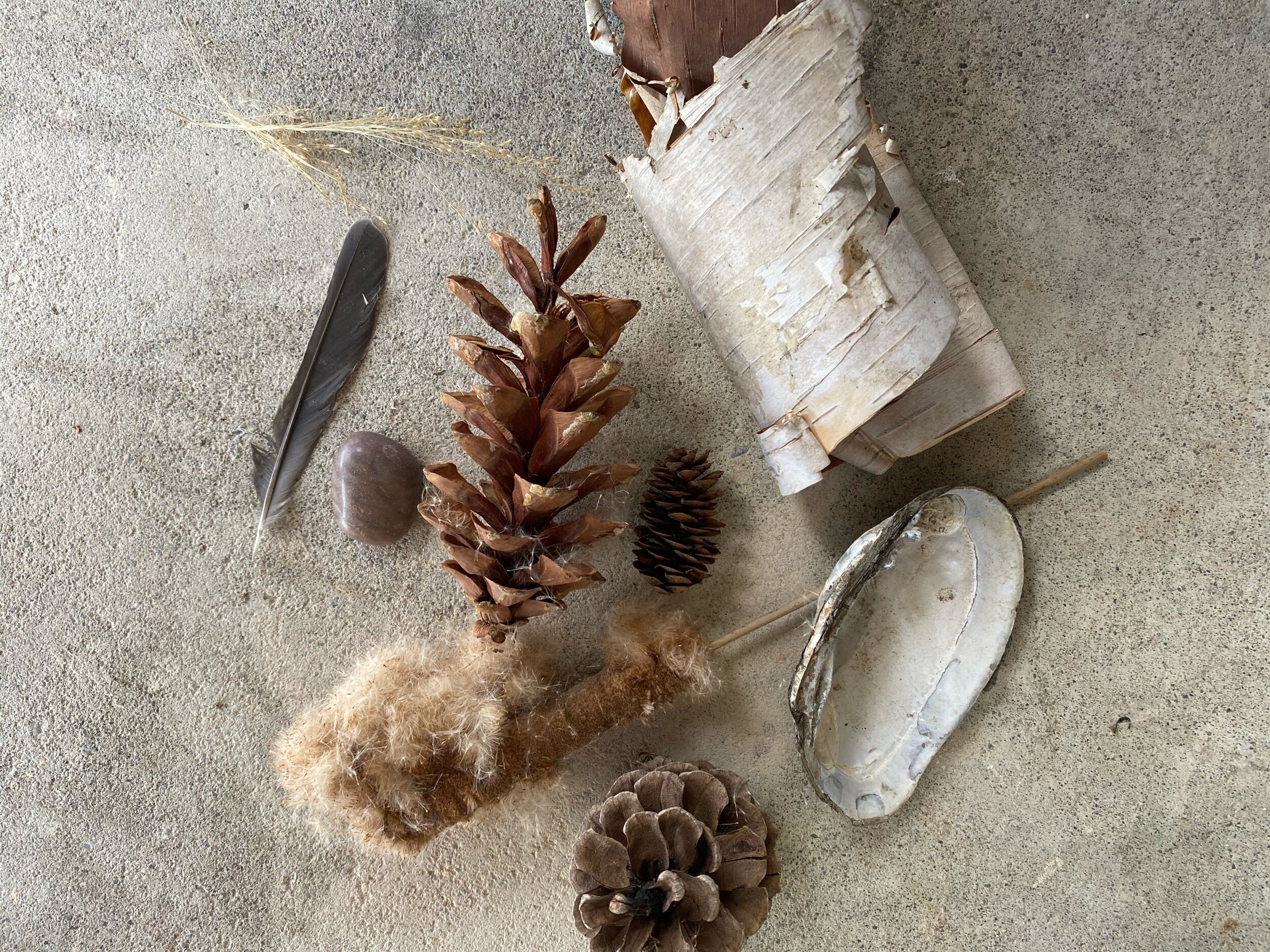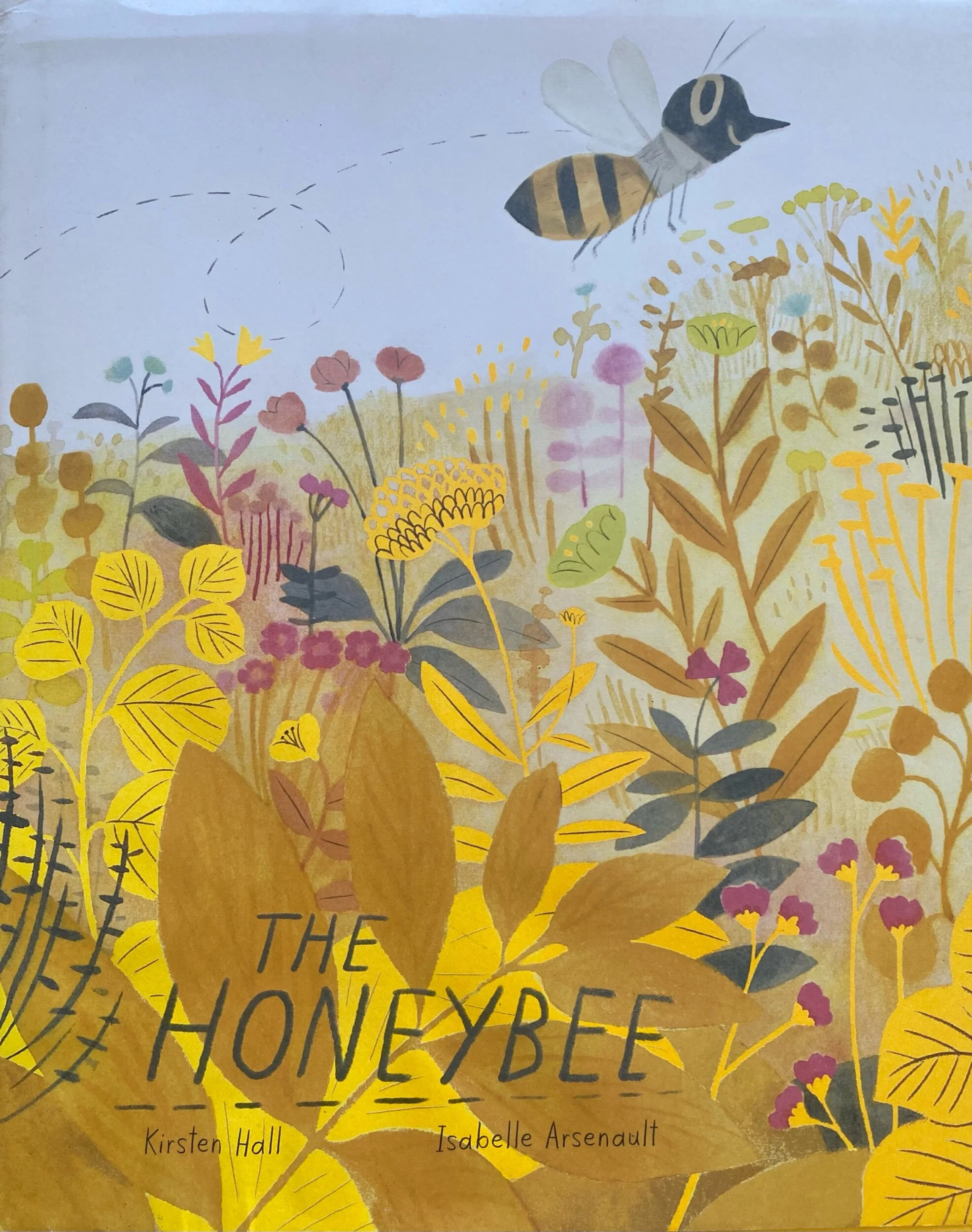If you are looking for resources, songs and poems that have been shared previously on the blog, you can use the search tool on this page.
Spring is a season full of sensory experiences! A rainbow of colours can now be seen on the landscape. There are new scents carried on the breeze. Taste a tea made of edible springtime plants. Listen to the bird song and frog chorus. Delight in the season through your senses!
Children learn about their five senses through experiences. Nature offers many ways to explore our senses — from a soft breeze on our face to the bright red of a flower to the taste of a freshly picked berry.
~ Excerpt from I Love Dirt by Jennifer Ward
SEASONAL POEMS:
Come with me
Oh, come and see!
There are blossoms now
On the beechnut tree,
And though the oak tree
Is dark and bare,
A pair of robins
Are nesting there;
And any minute
The willows lean
Will burst out in leaf —
Their tips are green
So come along,
Oh, come with me —
It’s spring again
And there’s lots to see.
Illustration Credit: Lore Pemberton
Wild Creatures
If in the wood still and quiet you’ll be,
All of these animals there you will see.
Little brown eyes and quick scampering feet,
Fieldmouse is looking for something to eat.
Rabbits are playing about on the grass
Flashing their fluffy white tails as they pass.
Fox slips by silently, urgent and keen;
Sharp musty smell marks the place where he’s been,
Squirrels will chatter and leap as they race;
Each hides his nuts in his own secret place.
Hedgehog runs fast or curls up like a ball;
Prickles protect him from enemies all.
Mole with pink fingers is digging the ground,
Throwing up earth in a small tidy mound.
Spiders their webs on the brambles will spread,
Flies to entrap with their strong sticky thread.
Woodlouse and centipede, ladybird, see,
Beetle and ant, and a fat bumble bee.
Bright eyes and patience you need it is true
To watch all these creatures and learn what they do.
~ Molly De Havas
Illustration Credit: Fiona Osbalstone
SEASONAL SONG:
Winter’s Come and Gone
Oh little red bird
Come to my window sill
Been so lonesome
Shaking that morning chill
Oh little red bird
Open your mouth and say
Been so lonesome
Just about flown away
So long now I've been out
In the rain and snow
But winter's come and gone
A little bird told me so
Oh little blue bird
Pearly feather breast
Five cold nickels' all I got left
Oh little blue bird
What am I gonna do
Five cold nickels
Ain't gonna see me through
Oh little black bird
On my wire line
Dark as trouble
In this heart of mine
Poor little black bird
Sings a worried song
Dark as trouble
'Til winter's come and gone
NATURE ADVENTURES & PROJECTS
Pack your backpack with a snack, water, and extra clothes and get ready to hit the trail (or your backyard!).
Here are some ideas that you might want to try out this week:
SIGHT
NATURE ADVENTURE
In your backyard or local green space, do a ‘Belly and Back Exploration’. Lay down on the ground on your back and look up and all around. What do you see? Are the objects you see near or far?
Roll over onto your belly and look closely at the ground. What do you see? Are the objects you see near or far?
Repeat the exercise a couple of times. Take your time and really observe the world around you from each position.
PROJECT
Draw your Observations
Draw a picture in your nature journal of what you observed when you lay on your back.
Draw a picture in your nature journal of what you observed when you lay on your belly.
Belly and Back Exploration Drawing
Numeracy Connections
What is the smallest / biggest object you observed?
Create a chart arranging the objects from smallest to biggest.
Literacy Connections
Encourage your child to talk about their observations.
Develop a vocabulary list of words based on your child’s observations.
SMELL
NATURE ADVENTURE
On your adventure notice the scents around you. Pause every so often as you walk to breathe in deeply and take note of what you smell.
Spring smells like…
- The earthy smell of soil, leaf mould, rotting twigs and earthworms
- The rich fragrance of black cottonwood and balsam poplar resin emanating from sun-warmed buds as they open
- The scent of flowering shrubs and trees like cherries and lilacs
- The smell of freshly mown grass
~ Excerpt from The Big Book of Nature Activities
PROJECT
Smell Cocktail
You will need a few paper cups and a small twig as a swivel stick. As you hike, encourage your child to selectively harvest tiny ‘bits’ of the forest.
Examples:
A pinch of soil
A part of a leaf
A petal of a wildflower
A bud
A flake of bark
Place each item in your cup and add your swivel stick. This is your smell cocktail!
Numeracy Connections
Count the number of different scents you can identify.
Write a ‘recipe’ including quantities for your ‘smell cocktail’
Literacy Connections
Record in a list the name of the scent if you can identify it, or record its description (sweet, sour, spicy, stinky, strong…)
Make a scent map of your adventure
Give your ‘smell cocktail’ a name (eg. “Petaltopia” or “Forest Fragrance”)
TOUCH
NATURE ADVENTURE
Use your fingers to explore the world around you. Find different textures in the environment. Climb a tree and notice the rough texture of the bark. Find a smooth stone to hold in the palm of your hand. Feel the soft petals of a dandelion against your cheek.
Spring feels like…
- The tenderness of a freshly opened leaf or the new growth on a conifer
- The softness of a pussy willow catkin
- The sliminess of a wriggling earthworm or slug
- The squelch of mud under your feet
- The warmth of the sun on your face
~ Excerpt from The Big Book of Nature Activities
PROJECT
Mystery Bag or Box
Can your fingers guess what mysterious natural object is in a box or bag, just by feeling?
Natural treasures for a mystery box / bag.
Materials:
A medium-sized box with a hand hole cut in the side OR an old pillowcase
Five to ten familiar natural objects. Such as…
a leathery leaf such as an oak
a soft leafy like a maple
different kinds of seeds like maple keys or acorns
the cones of different conifers
a feather
a milkweed pod
a small bracket fungus
the seed head of a grass
a fern
a mussel or snail shell
Instructions:
Place the collected natural items in the box or bag
Take turns reaching into the box / bag and try to identify by touch what item you are holding
Extension: Repeat the activity again wearing a pair of latex gloves. How is the experience different? Why?
Numeracy Connections
How many objects are in the bag?
Literacy Connections
List the items in the box / bag
Describe the texture of each object in one or two words
SOUND
NATURE ADVENTURE
Go on a sound walk. As you walk, notice the sounds you hear and try to identify which direction the sound came from.
PROJECT
Make a Sound Map
Choose a site where you are likely to hear a variety of natural sounds. Edge habitats near a marsh can be excellent. Draw an X in the center of the page in your nature journal. Explain to your child that the page is a map and the X is where they are sitting. Each time they hear a sound, they should mark its location (paying attention to the direction and distance from the X) and represent it with a simple symbol or picture.
Materials:
Nature journal
Pencil, markers, or crayons
Numeracy Connections
Can you estimate how far the sound was away from you (steps or metres)?
How many different natural sounds did you hear?
Literacy Connections
Write a list of sounds that you heard.
Read a story about one of the creatures you heard.
TASTE
NATURE ADVENTURE
Bring your collection basket on your nature adventure and go in search of some of these edible plants to harvest to make a Sun Tea:
Dandelions flowers
Cedar leaves
Spruce tips
Lilac flowers
PROJECT
Make a Sun Tea
Materials:
Large glass jar with a lid
Edible plants
Water
Honey (optional)
Lemon juice (optional)
Instructions:
Pick the petals off the dandelions and / or lilacs and place them in the jar.
Place the cedar leaves and / or spruce tips in the jar.
Fill the jar with water.
Add honey and lemon juice to taste (optional).
Put the lid on the jar and place the jar in a sunny spot for a few hours.
Pour yourself a cup of Sun Tea and enjoy!
Numeracy Connections
Write a ‘recipe’ including quantities for your Sun Tea
Literacy Connections
List the ingredients used to make your tea
Give your Sun Tea a name
Describe the flavour of your Sun Tea
SEASONAL STORIES
Teacher Sabrina reading the story The Honeybee by Kirsten Hall & Isabelle Arsenault.
CONNECT WITH COMMUNITY
You have the opportunity to connect with other parents and families on the Nature (home)School journey through a private Facebook group. The digital forum is a place where you can post photos of the activities that you get up to with your children, share stories or inspirations from your outdoor adventures, and connect with other families. Please follow the link to connect with other families in the online community or from Facebook - search: Nature (home)School Support.


















